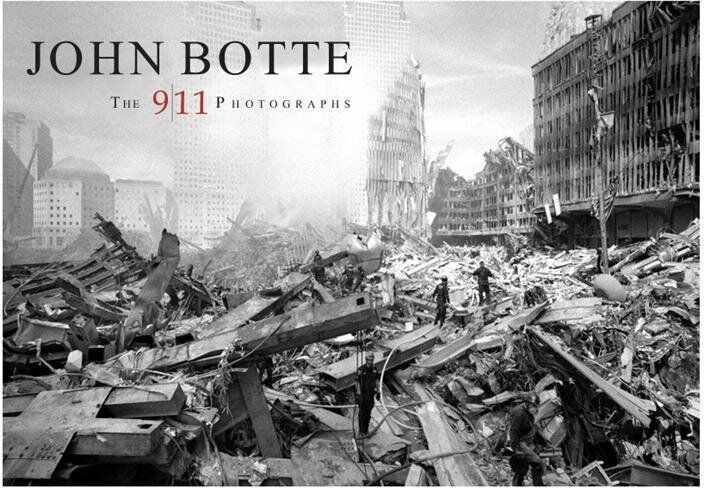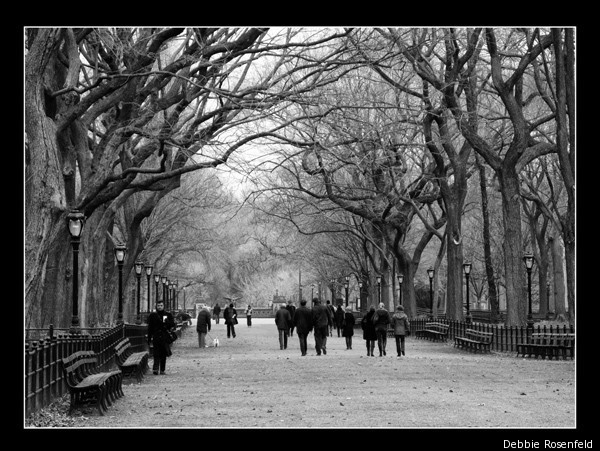
"If you had told me that 10 years later, as a result of 9/11, of all of this, that my life would actually be better, I'd never have believed you."
Debbie Rosenfeld recalls the events of September 11, 2001. She speaks of the embraces of strangers in Midtown Manhattan, about her disdain for New Jersey transit, and her friends from the Port Authority. "I started reading the list, but all I could see was their children's faces..." she stops, her voice wavering over the phone.
Between narrowly escaping the 48th floor during the World Trade Center bombing of 1993 and losing too many friends in 2001, she and her husband made their way from the New York Metro area to Ohio. She remembers the decision being almost immediate after speaking to her husband. "He just said, 'we're outta here' and that was that." At this point, Rosenfeld's pain set in, a mix of horror and shock and total disbelief. "My whole belief system had collapsed," she remembers. And to help extinguish the pain, Rosenfeld, a Maplewood, New Jersey, girl via Brooklyn, picked up a camera and just started shooting photos of beautiful things.
After testing the grounds with a neighborhood art show, one of her photos, a black and white travel photograph featuring a yellow house boat, was purchased by a local librarian. Rosenfeld comes alive on the line, describing her surprise at the purchase. "It changed the course of my whole life," she excitedly announces. From there Rosenfeld went on to fill a portfolio of botanical pictures and urban architecture stills. She's been awarded a grant to take travel photography in exotic locales, was invited to apply for an artist residency program, and has two works in a Washington, D.C., museum.

Currently her impressive portfolio, a mix of stunning travel photographs and electronic imaging, holds no images of the day or neighborhood that enabled the change. "Art is therapy," she notes. "Why would I want to dwell on tragedy when, in my photographs, I can create a perfect world?" Though she took a trip back to New York two years ago, her camera stayed by her side in Downtown Manhattan, only emerging when she reached Central Park, a photograph she fondly remembers as representative of her own healing.
Similarly, across the country in Oakland, California, author Liz Newman has had a regrowth of her own, nearly a mirror of Rosenfeld's experience.
Newman is delicate and tough at the same time, a straight-shooter who describes a difficult past filled with childhood abuse and a burning need to find herself. Of course, like so many others, 9/11 interrupted her growing period, and her life would never be the same following. She remembers being at her office, watching colleagues stumble in while the news in New York roared on. "We were all shocked," she notes, and using her background in clinical psychology, she could see something more bubbling beneath the surface. "A lot of people suppress trauma, they hide their pain, they don't seek help. But this was different. Everyone had an overwhelming concern for everyone else's well being."
Watching the emotional scenes unfold before her prompted Newman to put her own emotions to paper, "something I had always wanted to do," she admits, but had never gotten the chance or motivation. Her book, "An Affinity for Shadows," is a romantic novel with a heroine who is stubborn and strong, and slowly comes to terms with her own pain. And, of course, the story is timed right around mid-September, 2001. "It's a story of love, but also of suffering," Newman describes of her book. And while 9/11 is a reoccurring character, she hopes the more forefront theme of learning how to deal with trauma, is what people first identify with. But why trap those feelings from September 11 on paper for everyone to see? "Art is a form of healing and it brings us to a higher state of consciousness than a textbook ever could."
Back in New York, the events of September 11 had made an unlikely artist out of John Botte. The NYPD detective had always had a love for the camera, "since I was 8 years old," he notes, but never in the way that this tragedy would portray.
"I was never without my camera, through my whole career," the tough New Yorker proudly announces. And through that 21-year career Botte photographed things both amazing and common place, from being on the job, to chatting with the guys at the station. He could chew your ear off for hours discussing the merits of black-and-white photography, his very first Leica camera, his Rangefinders and his upbringing in the darkroom. A real imagery scientist, Botte has a pure love for the delicate technical aspects of photography, a surprising quality in a rough-around-the-edges New York City police officer.
Botte was one of New York's finest who went into the burning rubble to remove bodies and search for survivors in the aftermath. With his camera by his side, he was given the blessing to do what he did best -- to document the neighborhood around the World Trade Center, covered in dust and soot, buildings emptied. Given his proximity to Ground Zero, you'd expect grizzly photographs of victims, but Botte's work is quiet, poignant in it's delicacy. "Those photos people take... the bodies and limbs... no one had more access to that than me," he painfully admits, "but I had no agenda except to capture what evoked my emotions. It was the true spirit of humanity in one moment in time."
A darkroom purist, Botte is allowing his work to be curated for a September 11 anniversary show by the Morrison Hotel Gallery at Calumet, "the first time they're being shown digitally," he adds, his voice giving off the pride of someone who is truly content with the body of work they've created. He's most proud of the teamwork, the collaboration, which he humbly admits to having little to do with, and hints that in some way, he hopes that these will go on to be the iconic imagery of that day, not the gruesome photographs the media loves to share. Botte has no plans to take his gift for the photographed image into a career jump, though it's something that will always be with him: "I didn't get into photography, photography got into me. That's what I always tell people."
Linda Lee Hack from Prescott, Arizona, is someone who would identify with that. She also received an artistic gift on 9/11, one that she wasn't prepared for.
While the drawings stacked in her guestroom may not be revolutionary for spunky middle school kids, or those who dabble in the occult, it's difficult to imagine the startling grey images of devils and angry faces coming out of the fingers of a soft-spoken housewife. Even as I speak to her, Hack is raving about her good fortune this week -- the sun is shining and birds are singing right outside of her window. Hack speaks eloquently as someone who has the deep, spiritual knowledge that life is more than what we see. After a series of bumps in life, she settled down in Florida and was going about her daily business, preparing for a move, when she turned on the television just following the collapse of the Twin Towers. As the shock set in and the world shifted, Hack's eyes were inexplicably drawn to a pencil and stack of printer paper off in the corner of the room. Throughout the next few weeks, she'd fight herself to stay away from it.
"When my children were young, we threw a birthday party and I was trying to draw a pin-the-tail-on-the-donkey game, and my 3-year-old said, 'no ma, let me do it,' she laughs. Hack is not shy in explaining that she's had no real artistic training throughout her life. "I didn't even know who Picasso was," she admits. Which is why it's so interesting that on November 15, 2001, she gave in to particularly strong feelings, picked up that pencil, and began to draw.
Hack describes her very first completed drawing as "a devilish thing, with four horns and a wing on one side, an arm on the other. And in the center of its belly, there's a five-pointed star." Not exactly a fan of the occult, Hack and her husband took her work to a local shop where her drawings were interpreted by a knowledgeable artist. The most startling image seems to be of a pointed face, another satanic-looking creature, in a cloud of swirls. The image is shockingly close to an infamous Mark Philips photograph from 9/11, something that haunts Hack's thoughts. And though she identifies herself as a spiritual person, "much more so now than before the attacks," she can't attribute her sudden talent to a higher being -- or any being. "I can't believe this came from my own hands," she reiterates again.

To make sense out of the chaotic events and the art itself, Hack decided to compile the work into a book called "The Channeling of September 11, 2001." Part of the proceeds from the book go to Tuesday's Children and Wounded Warriors, both 9/11-based charities.
Hack, like the other artists, isn't exactly sure what awakened in her during those tragic events. For all the artists, the ability seemed to be there, sitting under the surface, waiting for the right moment to pop up. Like so many of us, maybe it needed the push, the realization that today is the day to start living, before it could make itself known. But the real gift in this book, Hack hopes, is yet to come.
"I don't know that I'd call what happened a gift... maybe it was a message, maybe I was just the messenger. There's something in there for someone other than me and hopefully I'll be able to give someone else some kind of peace."